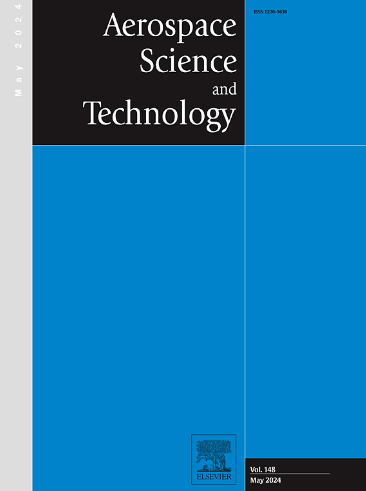利用数学模拟和深度神经网络优化多层智能硅太阳能电池的能量容量和振动控制性能
IF 5
1区 工程技术
Q1 ENGINEERING, AEROSPACE
引用次数: 0
摘要
本文研究了一种以氧化石墨烯粉末(GOP)为增强材料,配备传感器层和执行器层的多层硅太阳能电池的能量容量和振动控制性能。杨氏模量、泊松比和密度等力学性能均采用Halpin-Tsai方法和混合定律确定,确保了材料行为的准确建模。该公式采用von Kármán几何非线性假设和Hamilton变分原理,同时结合传感器和执行器层的本构关系来捕获它们的机电耦合效应。计算框架基于等几何分析(IGA),利用b样条和NURBS基函数实现高阶连续性和精确的几何表示。根据已发表的研究结果验证了该模型的准确性和对高级工程问题的适用性。为了提高效率,引入了深度神经网络(DNN),在保持复杂模拟下力学行为和动态响应预测精度的同时,降低了计算成本。深度神经网络框架设计了优化的超参数,确保了鲁棒性能,为未来的研究铺平了道路。这种混合方法为分析智能太阳能电池的能量和振动特性提供了一种创新和可靠的解决方案,将先进的数值方法与机器学习技术相结合。结果突出了这种方法在高性能能源系统设计和优化方面的潜力,有助于可持续工程和可再生能源的进步。本文章由计算机程序翻译,如有差异,请以英文原文为准。
Optimizing energy capacity, and vibration control performance of multi-layer smart silicon solar cells using mathematical simulation and deep neural networks
This study focuses on optimizing the energy capacity and vibration control performance of a multi-layer silicon solar cell reinforced with graphene oxide powder (GOP) and equipped with sensor and actuator layers. Mechanical properties such as Young's modulus, Poisson's ratio, and density are determined using the Halpin-Tsai method and the law of mixing, ensuring accurate modeling of material behavior. The formulation is developed by employing the von Kármán geometric nonlinearity assumptions and Hamilton's variational principle while incorporating the constitutive relationships for the sensor and actuator layers to capture their electromechanical coupling effects. The computational framework is based on isogeometric analysis (IGA), leveraging B-Spline and NURBS basis functions for higher-order continuity and precise geometric representation. The proposed model is validated against published studies, demonstrating its accuracy and applicability for advanced engineering problems. To enhance efficiency, a deep neural network (DNN) is introduced, providing low computational cost while preserving predictive accuracy for mechanical behavior and dynamic responses under complex simulations. The DNN framework is designed with optimized hyperparameters, ensuring robust performance and paving the way for future studies. This hybrid approach offers an innovative and reliable solution for analyzing the energy and vibration characteristics of smart solar cells, integrating advanced numerical methods with machine learning techniques. The results highlight the potential of this methodology for the design and optimization of high-performance energy systems, contributing to sustainable engineering and renewable energy advancements.
求助全文
通过发布文献求助,成功后即可免费获取论文全文。
去求助
来源期刊

Aerospace Science and Technology
工程技术-工程:宇航
CiteScore
10.30
自引率
28.60%
发文量
654
审稿时长
54 days
期刊介绍:
Aerospace Science and Technology publishes articles of outstanding scientific quality. Each article is reviewed by two referees. The journal welcomes papers from a wide range of countries. This journal publishes original papers, review articles and short communications related to all fields of aerospace research, fundamental and applied, potential applications of which are clearly related to:
• The design and the manufacture of aircraft, helicopters, missiles, launchers and satellites
• The control of their environment
• The study of various systems they are involved in, as supports or as targets.
Authors are invited to submit papers on new advances in the following topics to aerospace applications:
• Fluid dynamics
• Energetics and propulsion
• Materials and structures
• Flight mechanics
• Navigation, guidance and control
• Acoustics
• Optics
• Electromagnetism and radar
• Signal and image processing
• Information processing
• Data fusion
• Decision aid
• Human behaviour
• Robotics and intelligent systems
• Complex system engineering.
Etc.
 求助内容:
求助内容: 应助结果提醒方式:
应助结果提醒方式:


